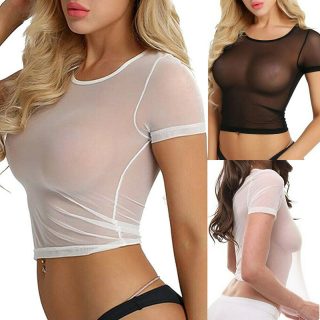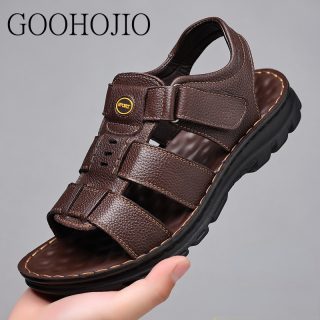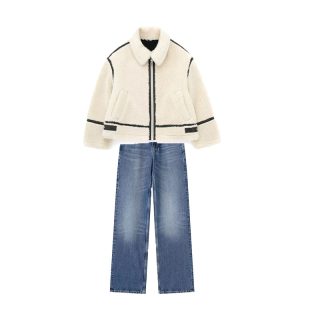Category
- Uncategorized
- bicycles
- Computer accessories
- Electric bicycles
- Electrical equipment and supplies
- Electronics
- Home Appliances
- Men clothes
- Men shoes
- Men's bags and luggage
- Phone accessories
- Projectors
- Scooter
- Smart TV
- Tents and hiking
- Unisex glasses
- Video Games
- Watches
- women bags
- women shoes
- Women's Clothing
Popular
-
 [YA Studio] Jiangzuo Version Huge Good Silhouette Drape Solid Color Suit Jacket Women's 2023 Spring Korean Casual Top 215
€42,50
[YA Studio] Jiangzuo Version Huge Good Silhouette Drape Solid Color Suit Jacket Women's 2023 Spring Korean Casual Top 215
€42,50
-
 Gasoline Generator Small 3Kw Frequency Conversion Single-Phase Portable Outdoor New Energy Charging Silent
€580,39
Gasoline Generator Small 3Kw Frequency Conversion Single-Phase Portable Outdoor New Energy Charging Silent
€580,39
-
 Outdoor Four Person Single Layer Tent Multi Person Camping Beach Advertising Tent KLM-004-1
€13,09
Outdoor Four Person Single Layer Tent Multi Person Camping Beach Advertising Tent KLM-004-1
€13,09
-
 White Embroidery Skinny Ripped Jeans Men Cotton Stretchy Slim Fit Hip Hop Denim Pants Casual Jeans for Men Jogging Trousers
€11,05
White Embroidery Skinny Ripped Jeans Men Cotton Stretchy Slim Fit Hip Hop Denim Pants Casual Jeans for Men Jogging Trousers
€11,05
-
 Sexy Women T Shirt See Through Mesh Black Tee Sheer Slim Short Sleeve Crop Top Women Clothing Blouse Transparent Clubwear
€2,15 – €2,74
Sexy Women T Shirt See Through Mesh Black Tee Sheer Slim Short Sleeve Crop Top Women Clothing Blouse Transparent Clubwear
€2,15 – €2,74
-
 Victorian Flounce Blouse Women OL Office Ladies Business White Shirt High Neck Frilly Ruffle Cuffs Shirts Female Blouses
€4,14
Victorian Flounce Blouse Women OL Office Ladies Business White Shirt High Neck Frilly Ruffle Cuffs Shirts Female Blouses
€4,14
-
 4000W48V32AH Электровелосипед Nз Aлюминиевого Cплава для Bзрослых
€3,395,88
4000W48V32AH Электровелосипед Nз Aлюминиевого Cплава для Bзрослых
€3,395,88
-
 USB Air Humidifier Mini Electric Aroma Diffuser Mist 130ML Wood Grain Oil Aromatherapy With 7 LED Light For Car Home Office
€10,50 – €11,30
USB Air Humidifier Mini Electric Aroma Diffuser Mist 130ML Wood Grain Oil Aromatherapy With 7 LED Light For Car Home Office
€10,50 – €11,30
-
 new men's Long sleeve casual printed shirt social ball luxury classic fashion men's clothing S-3XL
€2,38 – €2,50
new men's Long sleeve casual printed shirt social ball luxury classic fashion men's clothing S-3XL
€2,38 – €2,50
-
 Summer Men's 2 Piece Sets Tracksuits Long Sleeve T Shirt Long Sweatpants Set Streetwear Sportstreet Men Oversized Men Clothing
€8,44 – €12,30
Summer Men's 2 Piece Sets Tracksuits Long Sleeve T Shirt Long Sweatpants Set Streetwear Sportstreet Men Oversized Men Clothing
€8,44 – €12,30
-
 JNGE POWER 100W Foldable Solar Panel Charger for Solar Power Station Solar Generator Off grid
€337,38
JNGE POWER 100W Foldable Solar Panel Charger for Solar Power Station Solar Generator Off grid
€337,38
-
 Design sensuous hollowed-out pink one-piece suit 2023 autumn lapel long sleeve pad shoulder back slim-fit personality suit jacke
€64,19
Design sensuous hollowed-out pink one-piece suit 2023 autumn lapel long sleeve pad shoulder back slim-fit personality suit jacke
€64,19
-
 2022 New Men Watch Fashion Casual Skull Pattern Leather Quartz Watch Analog Male Military Sports Wristwatch Relogio Masculino
€4,75 – €5,93
2022 New Men Watch Fashion Casual Skull Pattern Leather Quartz Watch Analog Male Military Sports Wristwatch Relogio Masculino
€4,75 – €5,93
-
 Fashion Women Lips Eyelash Print Sleeveless Blouses Shirts 2020 Summer Ladies Elegant Office Lady Casual Tops Blusa Streetwear
€4,15 – €4,73
Fashion Women Lips Eyelash Print Sleeveless Blouses Shirts 2020 Summer Ladies Elegant Office Lady Casual Tops Blusa Streetwear
€4,15 – €4,73
-
 Mini Electric Stove Hot Plate Water Boiler Cooking Plate Multifunctional Coffee Tea Heater Home Appliance Hot Plates for Kitchen
€26,70 – €27,80
Mini Electric Stove Hot Plate Water Boiler Cooking Plate Multifunctional Coffee Tea Heater Home Appliance Hot Plates for Kitchen
€26,70 – €27,80
-
 18 Inches Bicycle Cushion is comfortable and soft Children Bike Wear Resistant Antiskid Strong Load Bearing Capacity
€153,64 – €166,39
18 Inches Bicycle Cushion is comfortable and soft Children Bike Wear Resistant Antiskid Strong Load Bearing Capacity
€153,64 – €166,39
-
 20000mAh Portable Wireless Power Bank, 22.5W Fast Charging Mobile Phone Charger, Spare External Auxiliary Battery Pack
€36,28 – €44,49
20000mAh Portable Wireless Power Bank, 22.5W Fast Charging Mobile Phone Charger, Spare External Auxiliary Battery Pack
€36,28 – €44,49
-
 Heroes Del Silencio Large Capacity Fashion Backpack Laptop Travel Bags Heroes Del Silencio Silences Hero Entre Dos Tierras
€3,97 – €21,76
Heroes Del Silencio Large Capacity Fashion Backpack Laptop Travel Bags Heroes Del Silencio Silences Hero Entre Dos Tierras
€3,97 – €21,76
-
 Solid Color Gradient Print Men's Sweatsuit Set Summer Casual Zipper Polo Shirt And Shorts 2pcs Sets Trend Man Pullover Clothing
€6,84
Solid Color Gradient Print Men's Sweatsuit Set Summer Casual Zipper Polo Shirt And Shorts 2pcs Sets Trend Man Pullover Clothing
€6,84
-
 NEW 75" Class Q650G 4K Q-LED HDTV with HDR in Black -Smart TV
€1,294,93
NEW 75" Class Q650G 4K Q-LED HDTV with HDR in Black -Smart TV
€1,294,93
Solar Roof Tile 87W Thin Film Photovoltaic Power Generates Energy System Double Glass Panel BIPV Solar Roof Tiles
€215,97
9 in stock
- Origin: Mainland China
- Brand Name: Sangobuild
- Model Number: Titan#1
- Material: Polycrystalline Silicon, Aluminum Zinc Sheet, Stone Granules
- Place of Origin: Zhejiang, China
- Cell size: 182mmx182mm
- Panel Dimensions: 1360*480mm
- Type: Double-glass
- Surface Treatment: Acrylic Overglaze
- Size: 1340x420mm
- Effective Size: 1290x380mm
- Thickness: 0.35-0.55mm
- Coverage Area: 0.5sq.m
- Tiles/Sq.m: 2 pieces
- Color: Red, Blue, Grey, Black, Customization
- Warranty: 50 years
- Main market: Africa, North America, South America, Southeast Asia
BIPV solutions for roofing and solar roof tile projects are already successfully implemented and generating energy across Europe
in Scandinavia region, Middle East and North America.
Our flexible manufacturing allows us to deliver visually appealing and cost & energy efficient roofing solutions.
Despite changing sun illumination, solar roof tiles is a brilliant way for different world regions to fight CO2 emissions and
lower the carbon footprint of growing cities.


This technology so far has the highest durability rate against harsh environmental conditions and longer lifespan
Building-integrated photovoltaics (BIPV) energy is revolutionizing how homeowners can incorporate solar energy production into their homes.
BIPVs are built into the house’s vital exterior elements. In this sense, BIPVs serve the double function of generating renewable energy for your home from the sun while also performing the necessary structural tasks of certain building elements.



Anti-wind uplift performance detection conducted by National Construction Engineering Quality Supervision and Testing Center | Static wind uplift resistance >10,000.
3.High Reliability

finish all the installation of metal roofing tiles of a common residence. We can also provide online instructions support.
As its surface is covered with rough stone ships surface, stone granules crush the raindrops.break the, it could reduce the sounds of rain. Stone granules scattered the sun lights, keeps indoor not warm like normal steel sheets which is heat-conducting.
6) Eco-friendly and Recyclable
Solar roof tiles are zinc-aluminum based and have highly recyclable content. Over 90% of the tiles could be reuse.








FAQ
Essentially, anywhere that sunlight directly hits the exterior surface of your home, homeowners can potentially incorporate BIPV products into the building design. Companies that operate in the BIPV market continue to find ingenious ways to integrate BIPV products into the building envelope seamlessly. They can be part of standard building components such as façades, roofs, or windows. Though you could not generate electricity by placing solar panels on your home foundation, virtually anywhere that sunlight is present, you may be able to find a BIPV product to install.
What Types of Building-Integrated Photovoltaics Can You Buy?
BIPV products used to be exclusively for roofing. This feature makes sense since our roofs generally receive the most direct solar radiation. Most early innovators in BIPV technology focused on replacing traditional roofing with panels, tiles, or shingles that could generate renewable solar energy while protecting the home from the elements. The impetus for this innovation stemmed from asimple economic calculation. Suppose the average cost of a roofing replacement in the USA costs between $5,500 and $11,500. In that case, solar panels that doubled as a roof could essentially “subsidize” part of the cost of going solar.
BIPV products are systems that can function as a component of the building skin or envelope while simultaneously converting solar energy into electricity by serving a dual purpose. Instead of attaching solar panels to a separate roof or façade, BIPV products can offer weather protection, thermal insulation, noise protection, daylight illumination, and even increased safety, along with an independent, clean source of renewable energy for your home. According to one financial analysis, building-integrated photovoltaic products’ total global market size will grow to an astounding $59.5 billion by 2028. As more and more companies rush to enter the BIPV industry, the market could see a compound annual growth rate of at least 20 percent! In practical terms, this means that the options for building-integrated photovoltaics currently available to homeowners and builders will only continue to expand. Prices should also continue to drop as competition stiffens and more innovative products become available. The combination of the plummeting cost of solar energy and innovative technologies in solar energy production (such as thin-film technologies, solar cell efficiency, open-circuit voltage, short circuit current, maximum effect, and fill factor) will almost certainly continue to drive innovation in BIPV products.
How Much Energy Can BIPVs Produce?
Are BIPVs Worth It?
The primary appeal of BIPV products is twofold. BIPV systems increase the space on and around that home where you can turn solar radiation into usable energy for your home. More importantly, is the economic factor because BIPV products serve a double function. They provide renewable energy while also protecting the house, reducing the cost of autonomous solar energy generation for homeowners. By using solar shingles instead of asphalt panels, homeowners can essentially “discount” the roofing price from their solar installation. The same “discount” could also be applied to skylights, railings, skylights, and other places where manufacturers could design BIPV systems.
How Long do BIPVs Last?
Another added economic benefit with some BIPV systems is that they could potentially be much more durable than the building systems/elements they replace. For example, most asphalt shingle roofs have an average lifespan of 15 years. Conversely, most solar shingles will last 25-30 years with only a small drop in efficiency towards the end of that lifespan. The total economic savings associated with a BIPV roof, then, should take into consideration the cost of two roof installations. You could apply the same principle to solar facades and other BIPV systems.
What Is a Solar Shingle?
Like solar panels, solar roofing is designed to capture the energy from the sun that is shining on your roof and turn that energy into a usable power source for your home. Though different types of solar roofing products are available, they are all essentially mini solar panels designed to look like and function as conventional roofing materials. The main market driver of solar roofing products was consumer demand for solar panels that were less noticeable and conspicuous. Though some people appreciate the “futuristic” look of a roof clad in solar panels, others lament the loss of traditional roofing appearance. Solar roofing, then, is made to resemble asphalt shingles or slate tiles while also producing electricity. All of the different types of solar roofing are known as building-integrated photovoltaics (BIPV).
How Long Does Solar Roofing Last?
Solar shingles and other solar roofing products are lightweight and easy to install. Like all types of roofing alternatives, they are designed to withstand rain, wind, and hail and should easily last for 25 years or more. For example, Tesla’s Solar Roof comes with the following specifications/warrantees:
* Tile warranty: 25 years
* Power warranty: 25 years
* Weatherization warranty: 25 years
* Wind rating: ASTM D3161 Class F
* Fire rating: Class A (highest rating)
* Hail rating: ANSI FM 4473 Class 3
Related
Related products
-
AFG3021C original second-hand/New function signal generator
€1,868,77 – €3,020,24Add To CartPower Supply: AC Model Number: AFG3021C Motor Type: AC Motor Origin: US(Origin) Certification: CE Condition: second-hand/New Quality: 100% tested ok before delivery Warranty: NEW 12 months Package: carton or wooden box MOQ: 1 Piece Order time: 1~3 working days Type of shipping: DHL,UPS,Fedex,TNT,EMS and forwarder Payment Term: Aliexpress pay online,Paypal,bank transfer,Alipay,Wechat Pay Email: dengjj@yuntong.ntesmail.com Whatsapp: 86 18620063480
-
Solar Panel Connectors 12AWG XT60 Female Solar Panel Connection Cable Charging Cable Solar Generator Solar Power Supplies
€10,60Add To CartModel Number: Solar Panel Extension Cable Origin: Mainland China Certification: NONE Features:Tinned copper has good conductivity, low resistance, low power consumption and strong current load capacity.The outer skin is made of insulating PVC material, which is anti-freezing, pull-resistant and high-temperature resistant, and is safe to use.Firmly dock the equipment, no sparks will be generated, and double insulation does …
-
18V 20W Solar Panel 4000W Inverter Battery Charge 12V/24V Power Generation System Controller Kit Complete
€33,02Add To CartModel Number: H57169 Origin: Mainland China Certification: CE,NONE Features: 1. RV power generation, aquarium oxygen power generation system, household AC solar power system. 2. Environment-friendly and pollution-free, it realizes the energy conversion from solar power to power 3. Wide range of applications, it can be used in lots of place such as for car, small household appliances, …
-
5V Foldable Solar Panel, 20W Mobile Solar Charger for Power Supply, Laptop, Solar Generator, Fishing
€47,20Add To CartModel Number: Foldable Solar Panel 20W 5V Origin: Mainland China Voltage: 5V Power: 20W Current: 4.8A Open size: 66x28x1cm Fold Size: 28x 16 x 2.5cm Voltage regulator: QC3.0 USD Type C DC 5V Foldable Solar Panel, 20W Mobile Solar Charger for Power Supply, Laptop, Solar Generator, Fishing Features: 1. Made of high-quality materials, environmentally friendly, waterproof, durable and sensitive. 2. It can be …
Products
-
 WZATCO C5 Full HD 1080P LED Portable Projector Android 11.0 64G WIFI Smart Proyector Home Theater Media Video Player Game Beamer
€123,47 – €819,94
WZATCO C5 Full HD 1080P LED Portable Projector Android 11.0 64G WIFI Smart Proyector Home Theater Media Video Player Game Beamer
€123,47 – €819,94
-
 Slippers Summer 1 Wedges Retro Fish Mouth Large Size Sandals Women High Heel Platform Solid Color Plus Size Shoes Sandalias
€6,37
Slippers Summer 1 Wedges Retro Fish Mouth Large Size Sandals Women High Heel Platform Solid Color Plus Size Shoes Sandalias
€6,37
-
 New 48 Million Pixel HD Digital Camera Home Shooting Viewfinder Electronic Anti-Shake SLR Camera Student Micro-Single Camera
€87,69 – €94,71
New 48 Million Pixel HD Digital Camera Home Shooting Viewfinder Electronic Anti-Shake SLR Camera Student Micro-Single Camera
€87,69 – €94,71
-
 Printed Dresses For Women 2023 Spring And Summer New V-neck Bandage Slim Sexy Vestidos Ladies Fashions Long Tight Dress MsChuh
€6,95
Printed Dresses For Women 2023 Spring And Summer New V-neck Bandage Slim Sexy Vestidos Ladies Fashions Long Tight Dress MsChuh
€6,95
-
 Gasoline generator household small 220v silent digital frequency conversion 1000w generator mini micro
€219,02
Gasoline generator household small 220v silent digital frequency conversion 1000w generator mini micro
€219,02
-
 Camping Tent Oxford Cloth SUV Cabana Tent Waterproof Car Tailgate Tent For Camping Car Rear Tent Accessories
€41,56 – €43,01
Camping Tent Oxford Cloth SUV Cabana Tent Waterproof Car Tailgate Tent For Camping Car Rear Tent Accessories
€41,56 – €43,01
-
 New Female Ankle Strap Buckle Rhinestone Crystal Sandals 2023 Summer Women Round Toe High Heels Fashion Ladies Wedges Shoes Gold
€13,69 – €17,57
New Female Ankle Strap Buckle Rhinestone Crystal Sandals 2023 Summer Women Round Toe High Heels Fashion Ladies Wedges Shoes Gold
€13,69 – €17,57
-
 EU US UK Stock Ebike 1200W motor 48V 29.2AH lithium battery folding ebike full shock absorption 26*4.0 fat tire electric bicycle
€2,651,74 – €3,388,72
EU US UK Stock Ebike 1200W motor 48V 29.2AH lithium battery folding ebike full shock absorption 26*4.0 fat tire electric bicycle
€2,651,74 – €3,388,72
-
 Summer Designer Men Genuine Leather Sandals Hook & Loop Outside Men Cow Leather Slippers Soft-soled Male Casual Sandals Non-slip
€17,82
Summer Designer Men Genuine Leather Sandals Hook & Loop Outside Men Cow Leather Slippers Soft-soled Male Casual Sandals Non-slip
€17,82
-
 Electric Crepe Maker Pizza Pancake Machine Non-Stick Griddle Baking Pan Cake Machine Kitchen Appliance Cooking Tools 220V
€12,30
Electric Crepe Maker Pizza Pancake Machine Non-Stick Griddle Baking Pan Cake Machine Kitchen Appliance Cooking Tools 220V
€12,30
-
 . 4K UHD Android TV 42 55 65 72 inch curved tv smart led tv with usb 2021 50 60 inch 4k hd smart network wifi lcd tv
€268,31 – €848,10
. 4K UHD Android TV 42 55 65 72 inch curved tv smart led tv with usb 2021 50 60 inch 4k hd smart network wifi lcd tv
€268,31 – €848,10
-
 newly feather duck down short jackets lady coats
€44,89
newly feather duck down short jackets lady coats
€44,89
-
 FSDA Mesh Patchwork Long Sleeve Mini Bodycon Dress Women Autumn Winter Sexy Glitter Party Dresses Club Outfits
€16,00
FSDA Mesh Patchwork Long Sleeve Mini Bodycon Dress Women Autumn Winter Sexy Glitter Party Dresses Club Outfits
€16,00
-
 1600DPI USB Wireless Mouse 2.4Ghz Gamer Mouse 3-Gear 6 Keys Mute For PC Laptop Office Adjustable Gaming Mice Battery Mouse
€3,00
1600DPI USB Wireless Mouse 2.4Ghz Gamer Mouse 3-Gear 6 Keys Mute For PC Laptop Office Adjustable Gaming Mice Battery Mouse
€3,00
-
 (2023 Latest Model)Haocrown 22" Waterproof Smart Touch Screen Bathroom Mirror TV (Touchscreen , Mirror) - HG220BM-MT
€1,031,32
(2023 Latest Model)Haocrown 22" Waterproof Smart Touch Screen Bathroom Mirror TV (Touchscreen , Mirror) - HG220BM-MT
€1,031,32
-
 AKEZ 20 Inch S2 RX Snow Tire Electric Bicycle 48V1500W23AH City Commuting Bicycle
€1,376,09
AKEZ 20 Inch S2 RX Snow Tire Electric Bicycle 48V1500W23AH City Commuting Bicycle
€1,376,09
-
 Plating Transparent For Magsafe For Samsung Galaxy S21 S22 S23 Ultra Plus Case magnetic Wireless charging Silicone Clear Cover
€2,25 – €2,43
Plating Transparent For Magsafe For Samsung Galaxy S21 S22 S23 Ultra Plus Case magnetic Wireless charging Silicone Clear Cover
€2,25 – €2,43
-
 Women's Fleece Fur One-piece Jacket Coat Women's Wide Leg Mid-waist Trousers Jeans Basic 2023 Autumn and Winter Women's Clothing
€29,95 – €60,56
Women's Fleece Fur One-piece Jacket Coat Women's Wide Leg Mid-waist Trousers Jeans Basic 2023 Autumn and Winter Women's Clothing
€29,95 – €60,56
-
 Customize Disney Stitch 3D Hoodie Women's Hoodie Leggings Suit Stitch Yoga Pants Sweatpants Fashion Sports Suit Disney Yoga Suit
€17,22
Customize Disney Stitch 3D Hoodie Women's Hoodie Leggings Suit Stitch Yoga Pants Sweatpants Fashion Sports Suit Disney Yoga Suit
€17,22
-
 Dropshipping Windbreaker Waterproof Autumn Field Tactical Jacket Spring Army Men Coat Tactical Pilot Style Clothes Jacket Bomber
€23,09
Dropshipping Windbreaker Waterproof Autumn Field Tactical Jacket Spring Army Men Coat Tactical Pilot Style Clothes Jacket Bomber
€23,09
















Reviews
There are no reviews yet.